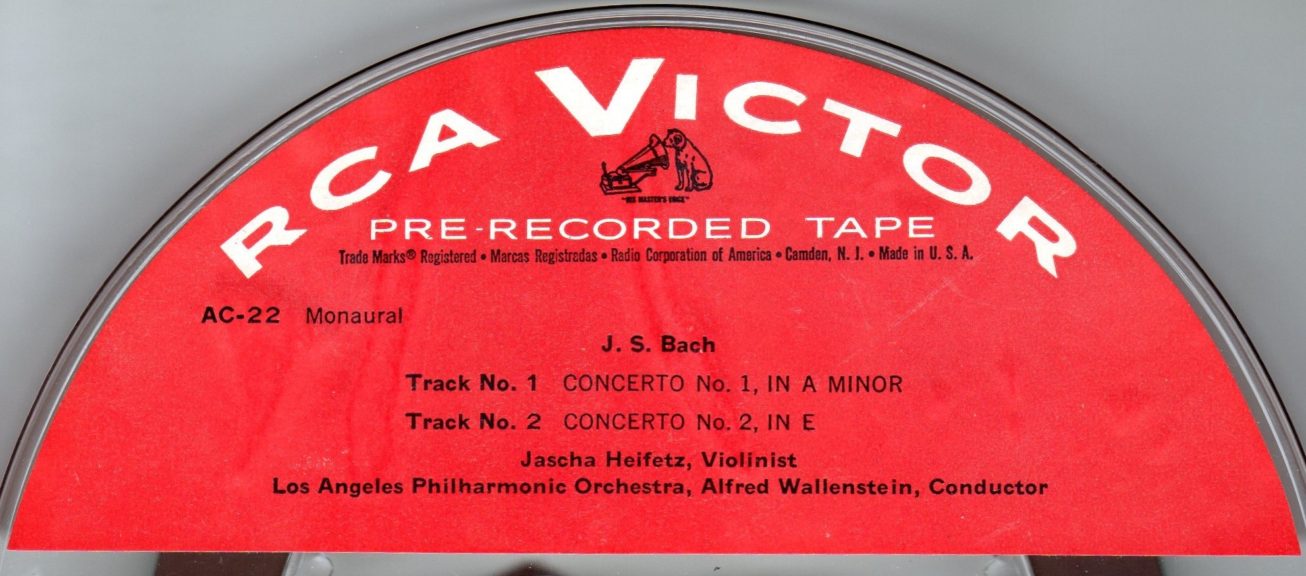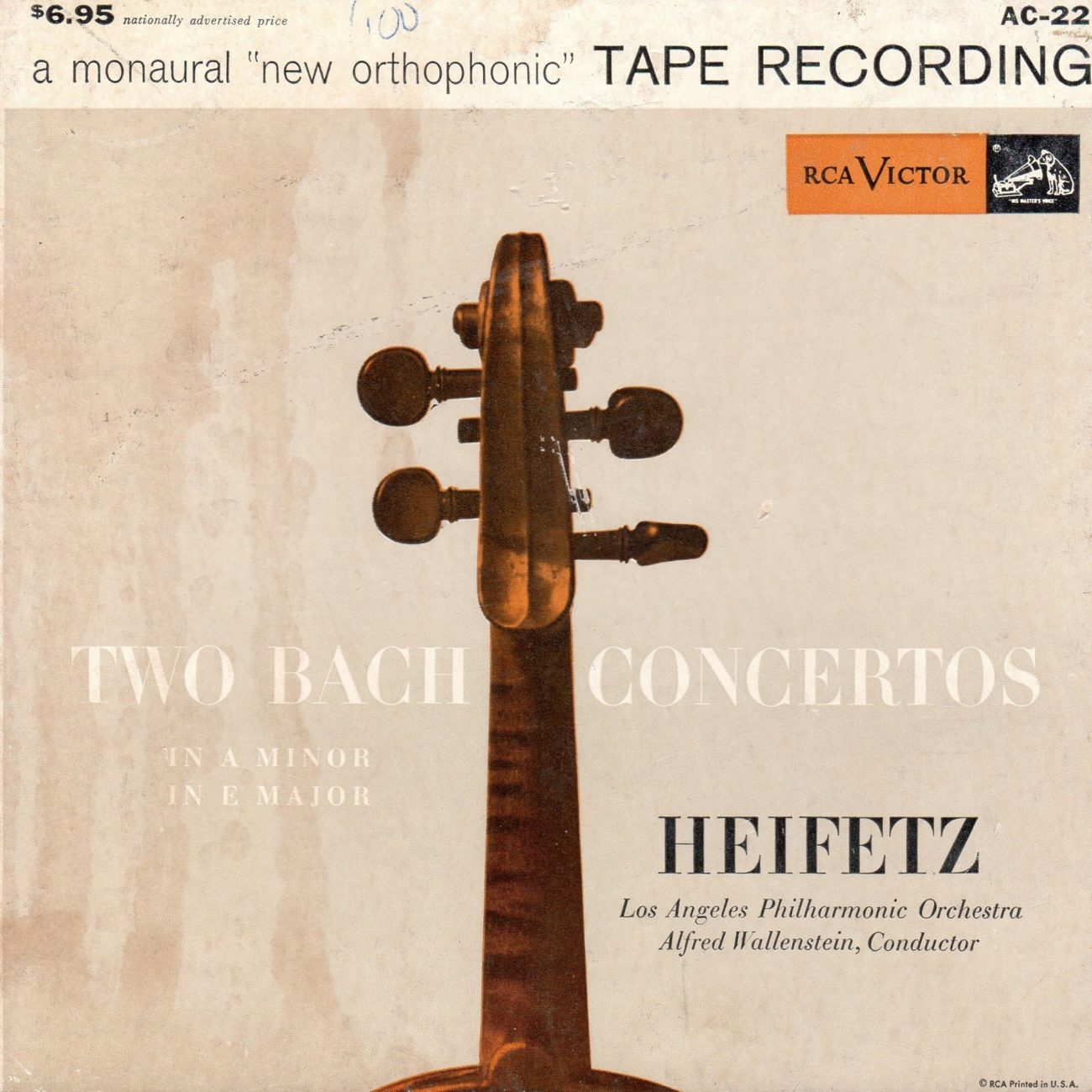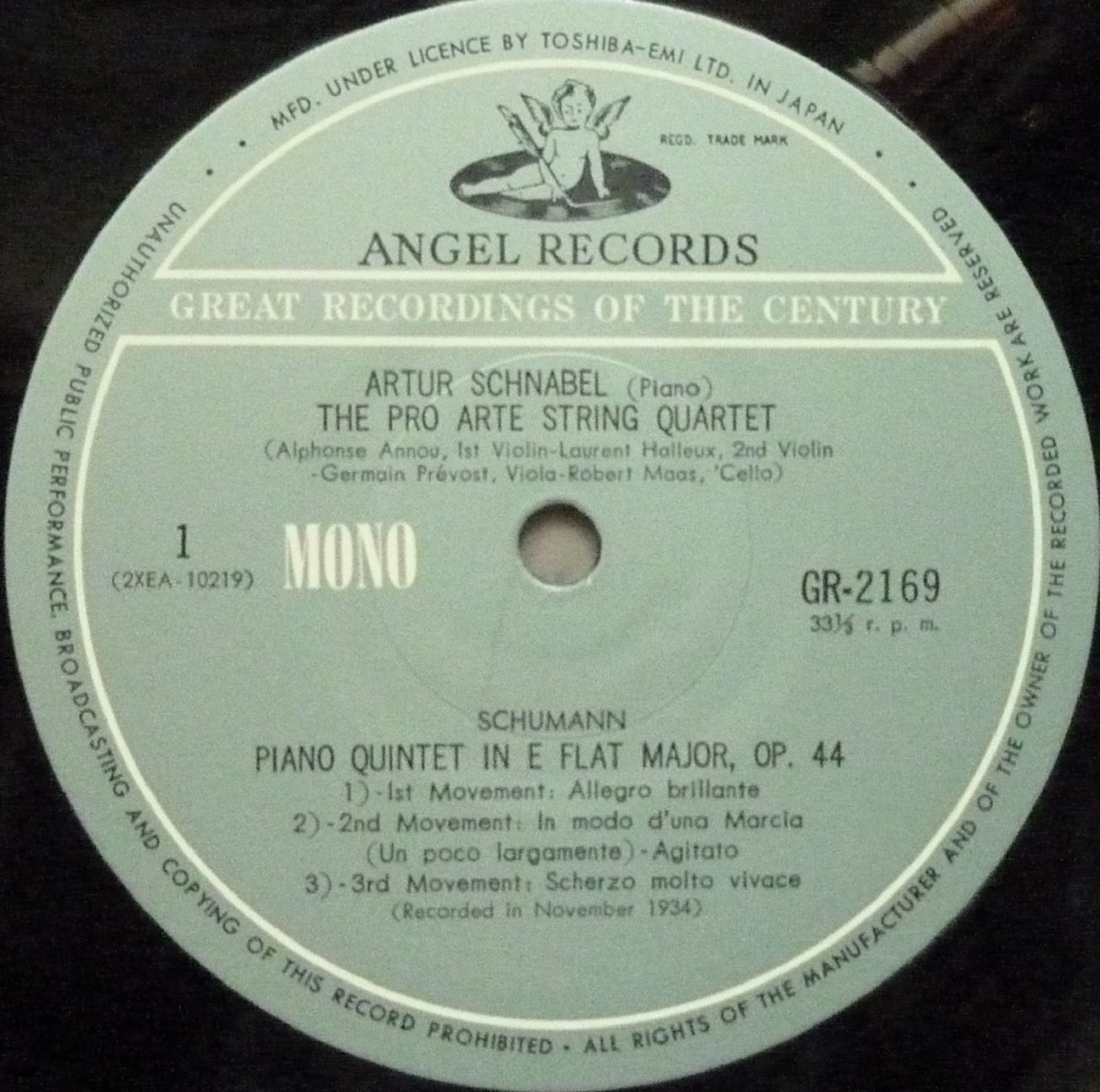Étiquette : Alfred Wallenstein

Jascha Heifetz – Alfred Wallenstein Los Angeles Philharmonic (LAPO)
Bach Concertos BWV 1041 & 1042
Hollywood – Republic Studios (Soundstage 9) – December 6, 1953
Source Bande/Tape RCA AC-22: 2 pistes/19 cm/s / 2 tracks 7.5 ips MONO
Heifetz n’a enregistré qu’une seule fois ces concertos pour le disque, sans même refaire de nouvelles versions pour la stéréo, que RCA a commencé à utiliser régulièrement pour ses enregistrements à peine quelques mois plus tard, à partir de mars 1954. Ici, le style, très dynamique, reste plutôt classique et l’effectif orchestral est relativement peu nombreux, ce qui nous éloigne heureusement des grands orchestres avec un plein effectif d’instrumentistes à cordes que l’on trouvait souvent à l’époque pour jouer ces œuvres.
Alfred Wallenstein (1898-1983) a été le violoncelle solo des orchestres de San Francisco, Los Angeles, et Chicago avant que Toscanini l’appelle en 1929 à ce même poste au NYPO, et ensuite l’encourage à entamer une carrière de chef d’orchestre. En 1943, il a succédé à Otto Klemperer à la tête du L APO, poste qu’il a conservé jusqu’en 1956, son successeur étant Eduard van Beinum.




Heifetz made only one commercial version of these concertos, without even making new versions for stereo, which RCA started to use regularly for its recordings only a few months later, in March 1954. Here, the highly dynamic style remains rather classical, and the orchestra is relatively limited in size, which fortunately takes us away from the large orchestras with a full body of strings, often used at the time to play these works.
Alfred Wallenstein (1898-1983) was principal cellist of the San Francisco, Los Angeles and Chicago orchestras before Toscanini called him in 1929 to the same position at the NYPO, and then encouraged him to start a conducting career. In 1943, he succeeded Otto Klemperer as head of the LAPO, a post he held until 1956, his successor being Eduard van Beinum.
Les liens de téléchargement sont dans le premier commentaire. The download links are in the first comment

Artur Schnabel, piano
Quintette Op.44 Quatuor Pro Arte
Abbey Road Studio n°3 – 19 November 1934
Source: 33t/LP Toshiba-EMI Angel Japan GR-2169
Concerto Op.54 Alfred Wallenstein Los Angeles Philharmonic Orchestra (LAPO)
Glendale (CA) – Hoover High School 4 March 1945
Source: 33t./LP Bruno Walter Society BWS-724 – annonce/announcement: fichier mp3/mp3 file (Internet)
Artur Schnabel a peu enregistré Schumann pour le disque, uniquement ce Quintette et les Kinderszenen. On a deux enregistrements publics du Concerto pour piano, l’un avec le NYPO et Pierre Monteux, et l’autre avec le LAPO et Alfred Wallenstein. Au programme de ses récitals, on trouve rarement des œuvres de Schumann (Davidsbündlertänze Op.6 et Fantaisie Op.17).
En 1975, lorsque BWS a publié en microsillon l’enregistrement du Concerto avec Alfred Wallenstein, Karl-Ulrich, le fils du pianiste, l’a écarté comme étant un faux. Pourtant, l’enregistrement du concert complet existe avec les annonces radio (il est disponible en mp3 sur Internet), et Schnabel en relate les conditions très particulières dans une lettre datée du 5 mars 1945 à son amie et confidente Mary Virginia Foreman:
‘ Hier soir, c’était le premier concert à Glendale. C’était la ‘Standard Oil West Coast hour’. Ils m’ont trompé en ne me le disant pas, et j’ai joué pour le même cachet que pour les autres concerts, où personne sauf les gens présents dans la salle peuvent entendre l’exécution. Je suis heureusement assez vieux pour ne pas faire d’histoires ou me mettre en colère. Le concert – si on peut le dénommer ainsi – n’avait aucun sens. Répétition à 16h30. J’ai donc joué le Schumann trois fois en l’espace de quatre heures. La ‘Standard Hour’ se doit de bourrer soixante minutes avec de la musique. Elle l’a fait avec: Ouverture d’Hansel and Gretel, Air du Concours de Wagner (sans chanteur), le Concerto de Schumann, et l’Apprenti de Dukas – et quelques mots pour les retardataires. La salle, une grange hyper-résonnante.’
Si le jeu de Schnabel est ici inhabituel au point d’avoir dérouté son propre fils, ceci semble dû au peu de temps de répétition qui a empêché une coordination entre les deux musiciens et à la direction un peu rude et peu différenciée de Wallenstein, qui a cependant l’avantage d’imprimer une tension permanente (ou si on veut, une ’fièvre schumanienne’) au discours musical, qui semble manquer parfois à la version plus orthodoxe avec Pierre Monteux*. Autrement dit, Schnabel est ici sous pression.
L’enregistrement du Quintette Op.44 possède toute la tension nécessaire, mais Schnabel joue avec ses partenaires habituels du Quatuor Pro Arte.
* Concert donné une seule fois à Carnegie Hall avec le NYPO le 13 juin 1943 (au lieu du 27 juin), avec une seule répétition le 12, donc des conditions à peine meilleures qu’en Californie 2 ans plus tard.


Artur Schnabel has made only two commercial recordings of the music by Schumann, only this Piano Quintet and the Kinderszenen. We have two live recordings of the Piano Concerto, one with the NYPO and Pierre Monteux, and one with the LAPO and Alfred Wallenstein. In his recitals, he rarely performed works by Schumann (Davidsbündlertänze Op.6 et Fantaisie Op.17).
In 1975, when BWS isued the LP with the recording of the Concerto with Alfred Wallenstein, the pianist’s son Karl-Ulrich dismissed it as a counterfeit. However, a complete recording of the concert exists with the radio announcements (it is available as a mp3 on the Internet), and Schnabel describes the very peculiar conditions in a letter dated Mars 5, 1945 to his friend and confidante Mary Virginia Foreman:
‘ Last night was the first concert in Glendale. It was the Standard Oil West Coast hour. They cheated me by not telling me this, and I played for the same fee as for the other concerts, when nobody except the people in the hall can hear the performance. I am, fortunately, now old enough not to get fussy or angry. The concert – if one could call it that – was just barbarous. Rehearsal at 4.30pm. I accordingly played tne Schumann three times within four hours. The Standard Hour has to stuff sixty minutes with music. It did with: Hansel and Gretel Overture, Prize Song by Wagner (no singer), Schumann Concerto, Dukas’ Apprentice – and words for latecomers. The place, an over-resonant barn.’
If Schnabel’s playing is here unusual to the point of having puzzled his own son, it seems to be due to the lack of rehearsal time which did not allow a coordination between the two musicians and to the rather hard and undifferenciated rendering of the score by Wallenstein, which however has the advantage of bringing a permanent tension (or ‘Schumann fever’ if you will) to the musical discourse, which seems to be lacking at times in the more conventional performance with Pierre Monteux*. In other words, Schnabel plays under pressure.
The recording of the Quintette Op.44 has all the required tension, but Schnabel plays with his longtime partners of the Quatuor Pro Arte.
* Concert given only once at Carnegie Hall with the NYPO on June 13, 1943 (instead of June 27), with a single rehearsal on June 12, thus hardly better conditions than in California 2 years later.



